Overcoming water barriers by troops during military operations is still one of the most difficult tasks of engineering support, but also the choose of its type: landing, ferry, or bridge.
After WWI, various tests were carried out in Poland, France and the United States, but it was in 1929 that Vickers-Armstrong created the first amphibious tank called "Vickers - Carden-Lloyd amphibious tank", types A4E11 and A4E12, which is considered to be the ancestor of all vehicles of this class. Purchased 8 copies by Russia, it will be used as a model for the T-37A, floating tank of N.N. Kozyreva, built in 1900 copies from 1933 to 1936.
About 1934, Anatoly Fedorovich Kravtsev was part of the OKDVA group, Special Red Banner Far Eastern Army, graduate engineer, draws the conclusions: the pressure of the tracks on the ground should not exceed 0.35-0.45 kg / cm², necessary speed above 6 km / h and a breakwater shield is required.
In 1934-38, under the direction of A. Kravtsev, work was carried out to ensure the passage of military equipment through the water barriers. A. Kravtsev's first ferry boat for BT-5 is made with two regular AZ boats and special amphibious tracks have been manufactured with removable articulated plates.
A. Kravtsev also imagined a rubberized rampart around the tank, like the WWII DD tank.
He also made two metal cigar-shaped floats were attached to the tank which developed a speed of about 14 km / h on water.
|
For the edges of banks it was necessary to provide tracked vehicles. A promising basis for the implementation of A. Kravtsev's ideas was the tracked artillery tractor from the Mytishchi No. 40 factory.
Throughout the study, in addition to many technical problems, security issues were addressed very seriously.
Initially, American GMC-4-71 diesel engines were fitted to the prototypes while awaiting a copy of this engine: the YaAZ M-204V.
The loading on the platform was carried out by a tailgate and folding ramps. There were many technical problems.
Three prototypes were built in Stalingrad.
After completing the factory tests, the conveyor was transferred to the test site. They took place from July to August 1948 in the suburbs of Moscow.
After carrying out control tests from 1949, the amphibious tracked vehicle K-61 was produced by the Krukovka car factory until 1958. Then the company began to develop a more advanced machine, the future PTS.
In the same year, production of K-61 was transferred to the Izhevsk Stroymashina factory. Izhevtsy presented the first vehicles on December 31, 1959, but testing continued in 1960.
Production of K-61 in Izhevsk lasted until 1965 in batches of 10 to 15 units per month. The total number of K61 produced would be around 1000 to 1500 copies.
In the mid-1950s, it was necessary to test in the field the possibility of creating ferries and floating bridges using engineering means.
Colonel-engineer Anatoly Kravtsev created devices for crossing water barriers by tanks.
|


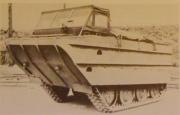
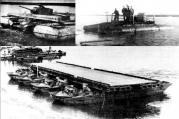
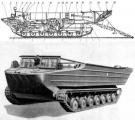

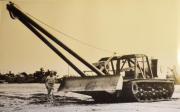
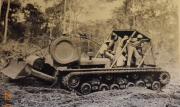
 Français
Français
 English
English
 Español
Español
 Italiano
Italiano
 Deutsch
Deutsch
 Nederlands
Nederlands
 Portuguesa
Portuguesa